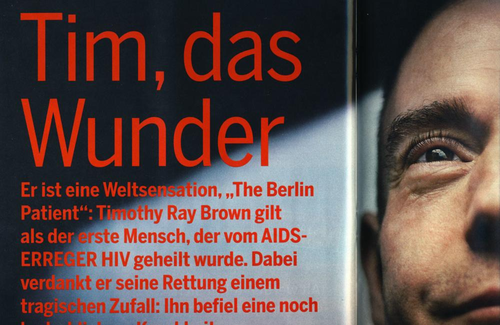
A very few people with HIV can control the virus without treatment; some of them can suppress the virus from the very beginning, while others achieve control with the help of initial antiretroviral therapy. This is the case of a man who has been effectively controlling the virus for 23 years after a short course of treatment. A team of Dutch researchers found that the virus is still present and intact in his cells and blood. They tried to explore the mechanisms by which he could maintain this control and described their findings in the journal AIDS.
Those who can control the virus without any intervention are known as elite controllers, while those who achieve control after initial treatment are known as post-treatment controllers. What is common among post-treatment controllers is that most of them start treatment very soon after acquiring the virus; in the stage known as acute HIV infection. This stage lasts for about four weeks and is thought to be the time in which the virus spreads to various tissues and establishes its hiding places.
So far scientists have been able to reveal various ways by which some people with HIV can achieve partial or complete control over the virus. Some maintain that control for short periods, while others can continue for years and decades. It is important to say that in all of these cases these people have the virus; in other words, we are excluding cases of natural resistance seen in Caucasian people with the CCR5 gene mutation.
The case described in this study is of a post-treatment controller; however, it is unique in that, the man has managed to maintain control for over two decades while the virus is still present and intact. In other words, it resembles what scientists call a functional cure or remission – as opposed to eradication of HIV (sometimes referred to as a sterilising cure), which may be difficult to achieve and perhaps riskier. Currently, there are several paths described that could lead to a functional cure in the future and this could be one of them.
Case
A 49-year-old man experiencing symptoms such as swollen lymph nodes, headache and fever was diagnosed with HIV in 1998 with a viral load of 2.7 million copies, 440 CD4 cells, and a positive antibody test. Two weeks later he was started on a rather complex antiretroviral regimen that included three NRTIs (stavudine, lamivudine, abacavir), an NNRTI (nevirapine), and a protease inhibitor (indinavir). His last regimen was efavirenz-based which he decided to discontinue in October 2000.
He had already become undetectable seven months after starting therapy, so at the moment of discontinuation he was virally suppressed. Nevertheless, he continued with his medical appointments, where his immunological and virological parameters were regularly checked. This is where the interesting part began – with the exception of a single blip (400 copies) at seven months after treatment discontinuation, he remained undetectable for the next 23 years.
Genetic and virological analyses
A range of genetic analyses were carried out to look for the presence of genes that are known to play a protective role in controlling HIV; they are usually present in elite controllers for instance. Intriguingly, the man lacked nearly all of the protective genes with the exception of one genetic feature that is known to give the CD8 immune cells the ability to recognise and fight HIV more robustly.
CD8 cells are often called cell-toxic because their primary function is to detect and destroy other cells which are sheltering an unfriendly agent in themselves. In fact, in recent years CD8s have been recognised as key players in controlling HIV.
At 18 years following treatment discontinuation, the researchers looked at the presence of proviruses inside his cells. Proviruses are a result of HIV converting its genetic material into a more compatible form that can lodge itself inside our own chromosomes and become inextricable part of our genome.
The man had ‘viable’ proviruses that could theoretically produce thousands of HIV viruses. The virus had few mutations that did not hamper its viability and replication. However, there was a new mutation that partly slowed down the replication rate of the virus. It probably arose as a result of the virus trying to escape immune pressures; in a way, attempting to change its ‘identity’ so that it is no longer easily recognisable. However, that seems to have backfired as the mutation decreased the virus’ ability to make copies of itself. It is hard to predict whether this had a significant contribution to the virological control, still it must have helped the immune system as fewer virus copies would be produced.
Immunological analyses
Next, the researchers looked for antibodies that the man’s immune system may have produced to neutralise the virus. Although he had antibodies, they were not broadly neutralising (in other words they were ineffective), so this could not explain his excellent virological control.
Lastly, they looked at the performance of his CD4 and CD8 immune cells. CD4 cells are central to proper immune functioning, as they organise and orchestrate immune responses to any infectious agent. They are also HIV’s primary target.
The investigators found that the man’s CD8 cells had a very strong response to HIV’s coating protein, which is essential for the virus to infect new cells. What is more, his CD8 cells had a very high rate of proliferation; they could multiply very quickly to meet the body’s demand in the fight against the virus.
Conclusion
In this case, strong CD8 responses and perhaps slower replication of the virus appear to be the prerequisites that allowed for the exceptional 23-year virological control. For 23 years, the man continued to have very low, but detectable levels of virus in his blood (below 5 copies) and the virus in his cells was still viable. These are all the circumstances that make this case unique.
At this point, it appears that rather than there being a single set of mechanisms necessary for virological control, there are many pathways discovered that can independently lead to control. It is like a maths question that seems to have many possible solutions, which is good news. Exploration of these pathways allows us to get a clearer picture of what the immune system can do to control the virus and perhaps prompt scientists into thinking of ways of harvesting and inducing these abilities of the immune system in those who are not controllers.
van Paassen PM et al. Virological and immunological correlates of HIV post-treatment control after temporal antiretroviral therapy during acute HIV infection. AIDS, online ahead of print, 12 September 2023.
DOI: 10.1097/QAD.0000000000003722

